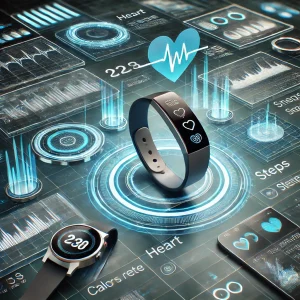The Evolution of Wearable Fitness Tech: What’s Next?

The Evolution of Wearable Fitness Tech: What’s Next?
Explore the fascinating journey of wearable fitness tech, from basic trackers to AI-powered devices. Discover what the future holds for this rapidly evolving industry.
—
Introduction
Wearable fitness technology has revolutionized the way we monitor and enhance our health. From simple pedometers to advanced AI-driven wearables, this industry has grown exponentially. As consumer demand for personalized health insights continues to rise, the future of wearable fitness tech promises groundbreaking innovations. This article delves into the evolution of wearable fitness devices, their current state, and what exciting developments lie ahead.
—
The Early Days of Wearable Fitness Tech
1. The Humble Beginnings
Wearable fitness technology started with basic devices like pedometers, which counted steps and provided rudimentary fitness data. Though limited in functionality, they paved the way for more sophisticated tools.
2. The First Fitness Trackers
In the early 2000s, companies like Fitbit and Garmin introduced devices that tracked steps, calories burned, and sleep patterns. These trackers gained popularity for their user-friendly design and practical insights into daily activity.
3. Rise of Smartphones and Connectivity
The integration of Bluetooth and smartphone apps transformed fitness wearables. Users could sync data, set goals, and receive detailed analytics, enhancing the overall fitness experience.
—
The Current State of Wearable Fitness Tech
1. Smartwatches and Multisensor Devices
READ ALSO: 5 Ways Blockchain Can Be Used Beyond Cryptocurrency.
Modern wearables, such as Apple Watch and Fitbit Sense, offer multisensor capabilities. They monitor heart rate, blood oxygen levels, stress, and even detect irregular heart rhythms. These devices combine fitness tracking with general health monitoring.
2. Integration of Artificial Intelligence (AI)
AI has elevated wearable tech to new heights. Algorithms analyze user data to provide personalized recommendations, predict health issues, and optimize workout plans.
3. Focus on Holistic Wellness
Today’s wearables go beyond fitness to address mental health, stress management, and sleep optimization. Features like guided breathing exercises and sleep tracking cater to overall well-being.
4. Style Meets Functionality
Design has become a critical factor, with companies prioritizing sleek, customizable wearables that blend seamlessly with everyday fashion.
—
Challenges and Opportunities in the Industry
1. Data Privacy Concerns
As wearables collect sensitive health data, ensuring user privacy and data security is paramount. Companies must comply with regulations like GDPR to build trust.
2. Battery Life and Durability
Despite technological advancements, battery life remains a challenge. Future innovations aim to extend battery life while maintaining lightweight designs.
3. Affordability and Accessibility
High costs can limit accessibility. Manufacturers are exploring ways to produce affordable devices without compromising quality.
—
What’s Next for Wearable Fitness Tech?
1. Advanced Health Monitoring
The future of wearables lies in deeper health insights. Devices capable of non-invasive glucose monitoring, blood pressure tracking, and hydration levels are on the horizon.
2. Integration with Virtual Reality (VR) and Augmented Reality (AR)
Fitness wearables will integrate with VR and AR to create immersive workout experiences. Imagine running through virtual terrains or participating in interactive fitness games.
3. AI-Powered Virtual Coaches
AI will act as a personal fitness coach, offering real-time feedback during workouts and adjusting plans based on progress and performance.
4. Biometric Authentication
Future devices will use biometric data for secure access, replacing traditional passwords and enhancing security.
5. Sustainability in Design
As eco-consciousness grows, manufacturers will adopt sustainable materials and processes, reducing the environmental impact of wearable tech.
6. Medical-Grade Wearables
Partnerships with healthcare providers will result in devices that double as medical tools, capable of early disease detection and remote patient monitoring.
—
Conclusion
Wearable fitness technology has come a long way, transforming from simple step counters to comprehensive health companions. As technology evolves, the potential for wearables is limitless, promising a future where fitness and health tracking are seamlessly integrated into daily life. With advancements in AI, biometrics, and AR/VR, wearable fitness tech will continue to shape how we approach health and wellness.
Your message has been sent





